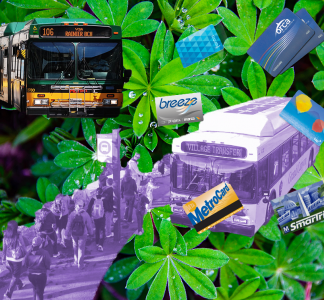How local parks can help close the nature gap

Birder at Peck Road Water Conservation Park, California.
Mason Cummings, TWS
New analysis shows targeted park investments can substantially boost outdoor access
Last year, researchers Jon Christensen, UCLA Institute of the Environment and Sustainability, and Dan Rademacher, GreenInfo Network, set out to explore gaps in equitable access to neighborhood and regional public lands in six states. Working with a team at GreenInfo, they used open data and open source tools to produce detailed, statewide analyses of park access based on every park and every person in each state. Through this research, they identified three policy recommendations to address unmet park access needs, which include:
-
Build new neighborhood parks;
-
Improve infrastructure and programming;
-
Increase transit connectivity.
Here’s an inside look at what they learned through the course of their research.
Note: This interview was conducted with both researchers at the same time. The answers here are paraphrased from that conversation and edited for length.
Q: What did you hope to achieve or learn from the Equitable Access Research Project?
A: The bedrock for equitable access to nature is having a park within a half-mile walking distance from your home. In the literature, there is a ton of corroboration on the health benefits of close-to-home parks, and yet, many people go without access. One question we wanted to ask: for people who don’t have access to nearby nature, what do they have access to within driving distance? The Wilderness Society was also interested in this question to help understand how regional parks and public lands may be part of the solution to close the access gap.
And so, we wanted to look at parks within walking and driving distance. We did a large-scale analysis of six states—Arizona, California, Georgia, Montana, New Mexico and Washington—and found that nearly 23 million people across all six states can’t walk to a neighborhood park within 10 minutes from their homes. However, the vast majority of people do live within average “recreational” driving distance (13 miles for urban areas and 23 for rural) of a regional park. This finding reinforced the idea that there is more to equitable access than physical proximity.
Q: What surprised you from your research?
A: It was surprising to all of us that a large percentage of people in the six states we analyzed have access to regional parks and public lands. We don’t want to minimize the sense of urgency around neighborhood parks because they are most highly correlated with positive health outcomes, but regional parks also play a role. As we mentioned, equitable access is not just about proximity. Are these spaces inviting to diverse communities? Can you access them via public transportation? Do they have multi-language signage and culturally relevant programming? All of these questions – and more – are important in identifying opportunities to improve equitable access to nature.
Q: What specific actions do you deem necessary to achieve the three recommendations you outlined?
A: Both funding and advocacy are necessary to achieving the recommendations we reached from our research. State and local governments need to dedicate funding to build and invest in parks; support infrastructure and amenity needs to welcome in more people; and we need to ensure that public transit is an option for accessing public lands for people without vehicles. Through use of our tool, people can identify communities with the highest needs to help prioritize where to invest in new parks or improve existing ones. That way, we can begin to solve the equity gap more effectively. Organized, community-led advocacy can help secure the funding and ensure it’s put to use in creating viable, equitable solutions.
Q: Would you say there was one policy solution that stuck out more than others? Why?
A: It’s a complicated landscape. It’s clear there is not just one policy solution, but several complementary solutions working together. One policy solution that stands out are outdoor equity funds, which put grant funding into the hands of local organizations who are already working to improve equitable access to nature for underserved youth and families. Programs like outdoor equity funds are a practical solution to reach people experiencing the nature gap. It’s imperative that state leaders embrace these groups as valued collaborators working to provide solutions for a shared goal. These groups are well-poised to address the issue, they just need more funding to do it.
Q: How do you envision the parkaccess.org tool being used?
A: We’ve always had the hope that the tools that we create would be used by public lands managers to identify park-poor communities and design programs and initiatives that would address the park equity gap in the communities that they serve. Our tool can also be useful for advocacy groups working on equitable access for the same purpose: assess where the highest needs are and address those needs with program and policy solutions. It’s an opportunity to bring people and needs together in creative ways for public lands advocacy. For instance, Indio Hills Palms Park is an oasis in the desert. You can imagine a program that identifies neighboring high-need schools and brings students out to the park to immerse themselves in the landscape and learn about it. Then, the students go home, tell their parents about it and they take a family trip back.
In addition to showing the demographics on the parkaccess.org website, we show what regional parks are within driving distance, who manages those parks and what legislative districts they are in. Solutions may not always come from the managing agencies but in policy innovations that can be identified through use of the tool. Additionally, making data free and accessible allows advocates and land managers to build a strong case without having to produce that data themselves. Instead, they can prioritize where to make the most impact for the most people through policy and advocacy solutions.





